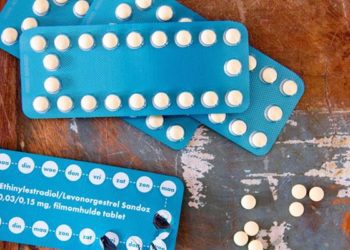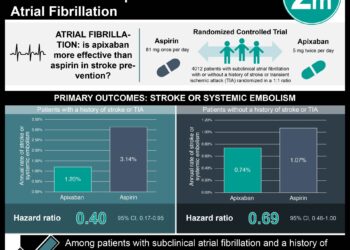Pericardiotomy after cardiac surgery may reduce the incidence of postoperative atrial fibrillation
1. Posterior left pericardiotomy resulted in significantly fewer episodes of atrial fibrillation, secondary to pericardial effusion, compared to no intervention.
2. The occurrence of postoperative major adverse events was comparable in both groups.
Evidence Rating Level: 1 (Excellent)
Study Rundown: Pericardial effusion is a common complication following cardiac surgery and may result in subsequent atrial fibrillation. The primary management for pericardial effusion is left pericardiotomy – an invasive but effective technique which involves draining of fluid from the pericardial sac. While some studies suggest that routine performance of left pericardiotomy may help to reduce atrial fibrillation post-cardiac surgery, the evidence is inconclusive. This randomized controlled trial aimed to assess whether performance of posterior left pericardiotomy helps to reduce the incidence of atrial fibrillation in patients with undergoing elective cardiac surgery. The primary outcome was the incidence of atrial fibrillation during the in-hospital stay, while key secondary outcomes included need for postoperative antiarrhythmic medications, systemic anticoagulation, and electrical cardioversion. According to results, patients assigned to left pericardiotomy reported significantly fewer instances of atrial fibrillation and pericardial effusion compared to no intervention. The median length of hospital admission and occurrence of adverse events were similar between groups. Overall, findings suggest that posterior left pericardiotomy after elective cardiac surgery may reduce the rate of secondary atrial fibrillation.
Click to read the study in The Lancet
Relevant Reading: Phase 3 Trial of Interleukin-1 Trap Rilonacept in Recurrent Pericarditis
In-depth [randomized controlled trial]: Between Sept 18, 2017, and Aug 2, 2021, 3601 patients were assessed for eligibility at the New York Presbyterian Hospital in USA. Adult patients with no prior history of atrial fibrillation or arrhythmias undergoing elective cardiac surgery for coronary arteries, the aortic valve, or ascending aorta were included. Altogether, 420 patients were included (212 in pericardiotomy group and 208 in control group) in the final analysis. The majority (76%) were male and median age among patients was 61.0 years (interquartile range [IQR] 53.0-70.0). Patients who underwent a left pericardiotomy reported significantly fewer episodes of atrial fibrillation compared to the control group (17% vs. 32%, odds ratio [OR] 0.44, 95% confidence interval [CI] 0.27-0.70, p=0.0007). Furthermore, fewer cases of postoperative pericardial effusion were noted in the intervention group compared to the no intervention group (12% vs. 21%, relative risk [RR] 0.58, 95% CI 0.37-0.91). The incidence of postoperative major adverse events was comparable between the two groups. Overall, a strong correlation was noted between pericardiotomy and reduction in the incidence of atrial fibrillation.
Image: PD
©2021 2 Minute Medicine, Inc. All rights reserved. No works may be reproduced without expressed written consent from 2 Minute Medicine, Inc. Inquire about licensing here. No article should be construed as medical advice and is not intended as such by the authors or by 2 Minute Medicine, Inc.







